Use the buyer persona and the buyer journey canvas to plan, implement and improve how you generate leads and convert buyers.
Note: You can download all the templates for free at the end of this article.
The business-to-business buying process has radically changed. Now companies need to fully align themselves with buyer journey or risk losing sales.
Digital B2B marketing done well presents incredible opportunities to gain leads and improve overall conversions. However, it’s not without its challenges. Simply taking a B2C approach is a recipe for disaster, yet many companies fall into this trap.
A typical problem with B2B marketers is that they often see the relationship only from their own perspective. The B2B buyer persona canvas helps dig deeper into what influencers the buying decision.
What is a buyer persona?
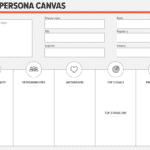
A buyer persona is a fictional representation of your ideal B2B customer based on a mix of research data. When creating a buyer persona(s), consider including behavioural and psychographic data, as well as their goals and motivations.
Table of Contents
What Makes The B2B Buyer Journey different?
B2B buying is fundamentally different to B2C. I cover this in more detail in B2B vs B2C, but here are some of the key points.
B2B Buyer
- Often involves complex products or services.
- The decision is judged by others – possible career consequences.
- Involves other stakeholders – some may be specialists.
- Can be for products that used by others across the business e.g. software.
- Normally a lot higher budgets/costs involved.
- Purchases can often be irreversible.
B2C Buyer
- Often simple transaction costs.
- Small/low budgets – think household items.
- Personal decision.
- Impulse purchases and little consideration.
- Decisions can often be reversed e.g. send back.
There are always exceptions to these rule. As an example, if you’re buying a car then it is a more complex buying decision, involves a lot more money and therefore will resemble a B2B buying decision.
What Is The Buyer Journey?
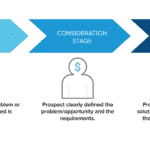
The buyer’s journey is a three-stage process that B2B buyers go through to purchase a product or service. The first stage is awareness, the second consideration and then the final decision stage.
The three-stage framework used to work well and still provides a good start point but it lacks a vital ingredient. I’ll come to that later.
The Three-Stage Buyer Journey
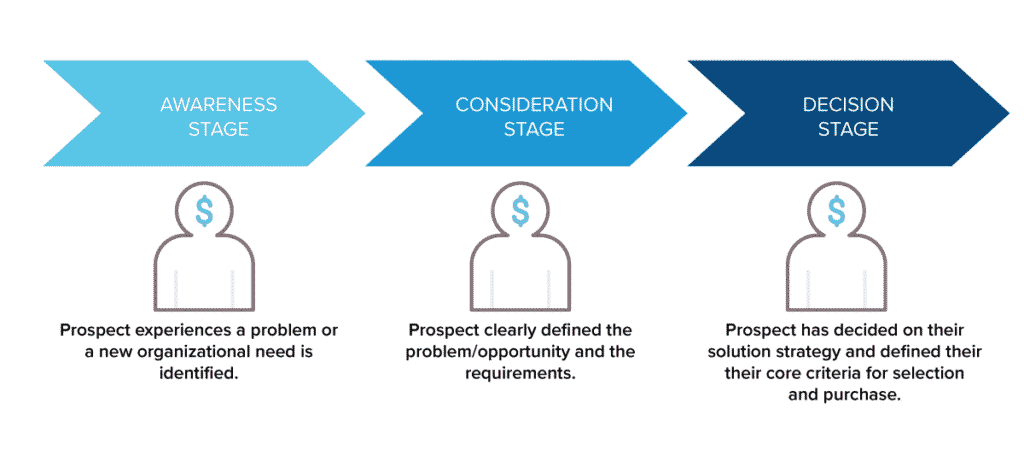
Pros
- Helps to identify key buying reasons.
- Prompts you to match communications to fit each stage.
- A useful framework for teams.
- Puts emphasis on the understanding buyer.
Cons
- Linear process – often buyers jump around stages.
- Doesn’t consider post-purchase actions.
- Doesn’t take into account other stakeholders in the process.
- Doesn’t identify or score buying criteria.
The Buyer Persona Toolkit
Why use a buyer journey toolkit rather than a simple canvas?
The more workshops I run the more I realize that trying to fit everything into a single canvas is difficult. Even Alexander Osterwalder and Yves Pigneur, creators of the business model canvas, ended up creating more canvas models.
They split out the Value Proposition Canvas from the Business Model Canvas and so made it easier for people to create and develop a value proposition examples and then select the best one.
The canvas models can be used either together or as standalone tools. Together though they create a natural workflow.
Each one helps you to improve how you apply your insights and get better marketing results.
- Buyer Persona
- Stakeholder Analysis (if you are dealing with a single buyer this isn’t needed).
- Influencing factors
- Buyer Journey
Create A Buyer Persona Data (steps 1 and 2)
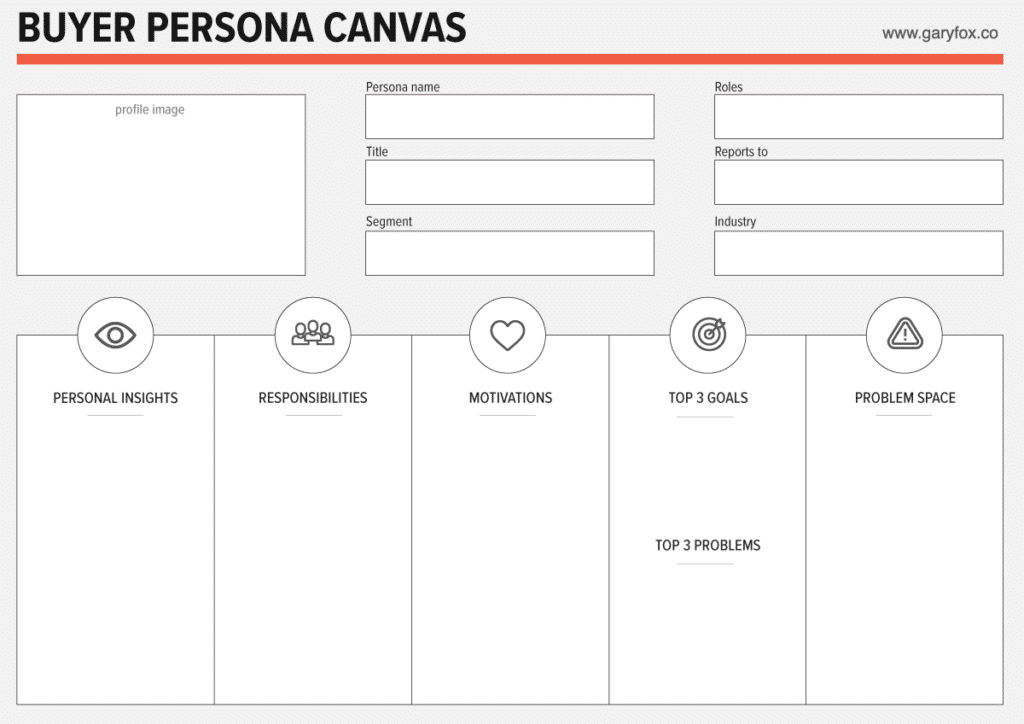
B2B buyers have a lot at stake when making buying decisions often involving millions of dollars. That alone makes it worth your while to do your research and really find out what are the critical points that will help you influence their decisions.
Some B2B buying opportunities do not come around frequently because contracts are signed and you are effectively locked out for a few years.
Even if a buyer subscribes to a service it can be hard to breakthrough. As an example, imagine a buyer makes a decision to change the companies accounting software.
Teams have to then learn and adapt to the new software which bears a cost not just in time but change – people often do not like changing process! Processes then become entrenched and the new way of working is adopted. Even if there are flaws the cost, time and changes become barriers then to further change.
These back office teams are end-users and indirectly part of the buying process.
Barriers to change affect buying decisions – overcoming them, and alleviating the cost of change, is a critical influencing factor for many buyers.
Step 1. Gather Your Data – Crete A Data-Driven Buyer Persona
What should you know about your customers?
- Review existing sales data and identify segments.
- Review your CRM system and extract existing segments and tags/data.
- Talk to sales teams, client success teams, marketing teams and senior managers – makes notes and pull together common themes.
- Prepare a questionnaire (short but use open questions) and interview existing customers about their buying decisions. I’ve listed some questions as examples below:
- ask about stakeholders within their business who are involved.
- key influencing factors.
- how and what do they read to keep up with the latest news in their industry/sector?
- how and what will influence future buying decisions?
- the criteria they used to make a decision.
- how do they score different potential suppliers?
- Identify if you have any obvious gaps in your knowledge.
Step2: Complete The buyer persona canvas
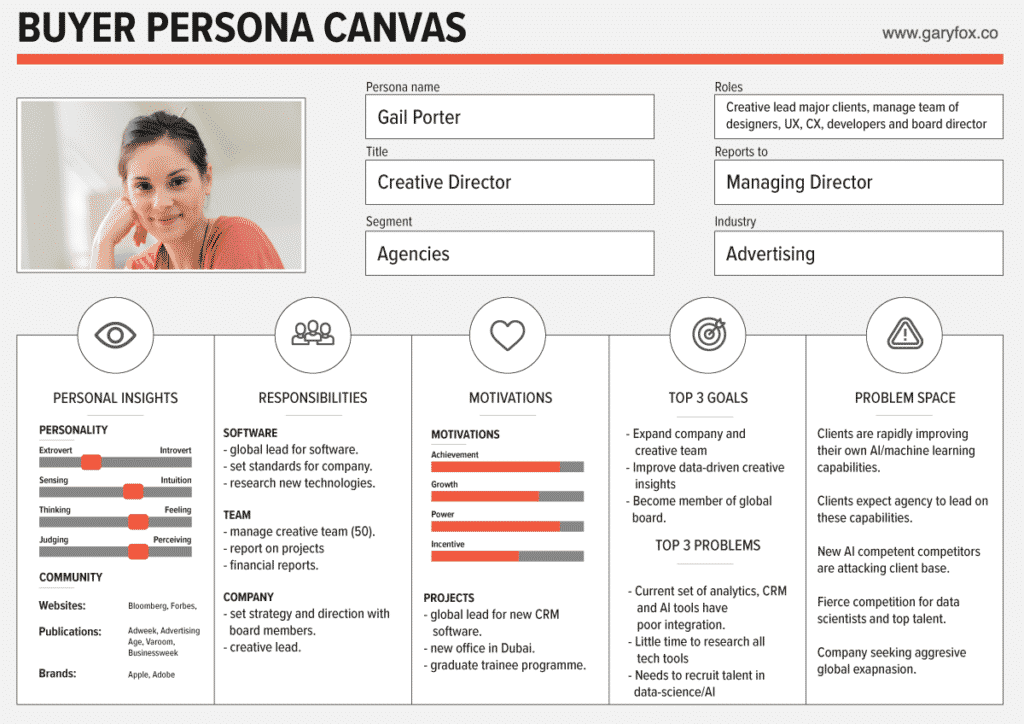
Map The Stakeholders (Steps 3 and 4)
Rarely in an organization does a buyer make decisions without consulting with others.
Often there will be a formal buying process with clear stages defined, but this is not always the case.
What is important though is to map and understand the stakeholders and how they align with the different buying criteria and stages of buying journey.
Note: A user can equally be a director as well as a decision-maker. Do not think of the circles as matching to an organizations hierarchy.
Often several people or departments may be involved and each may hold some level of influence in the buying decision.
Ignoring them can often lead to missing out on how they fit into the process and potentially their needs – some stakeholders may be the ultimate end users.
Step 3. Research The Stakeholders
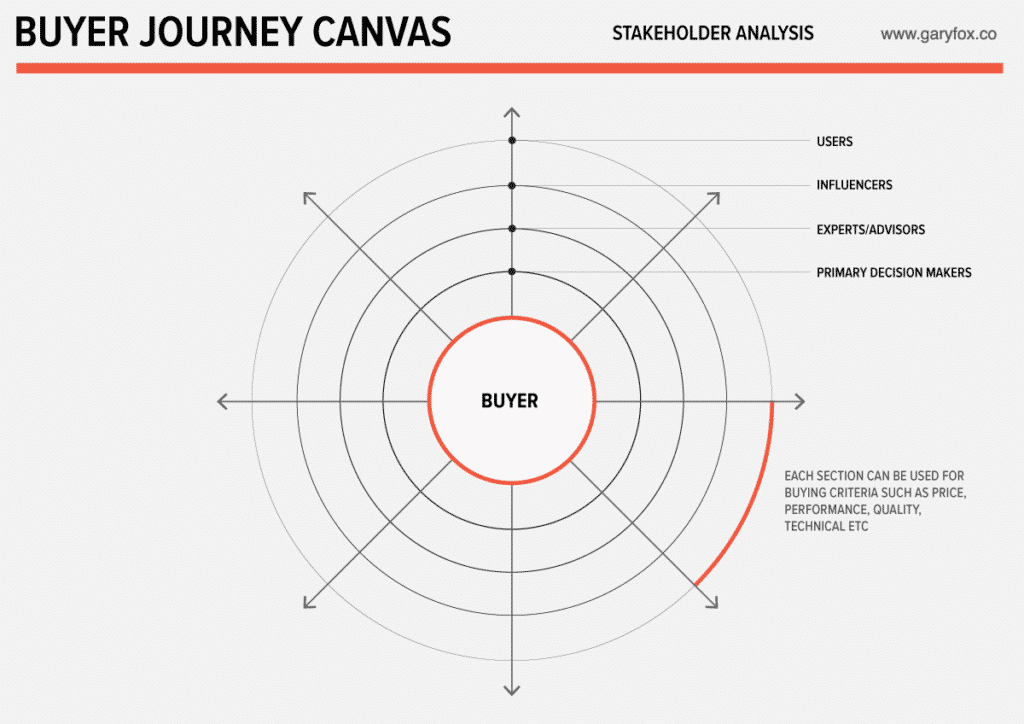
For small businesses and SME’s, this is often easy and in fact, the stakeholder radar might not be needed. However, for large organizations, there are often complex buying centres involving a variety of different B2B stakeholders.
- Use your data to identify the different stakeholders.
- Consider the buying process from their interests and motivations.
- A user will not be involved in the price and will be more interested in onboarding, workflow and ease of use.
There are two ways to use the stakeholder map:
- Map the stakeholders to different buying criteria.
- Map the stakeholders to the different stages of the buying journey.
Alternative Buying Criteria Analysis.
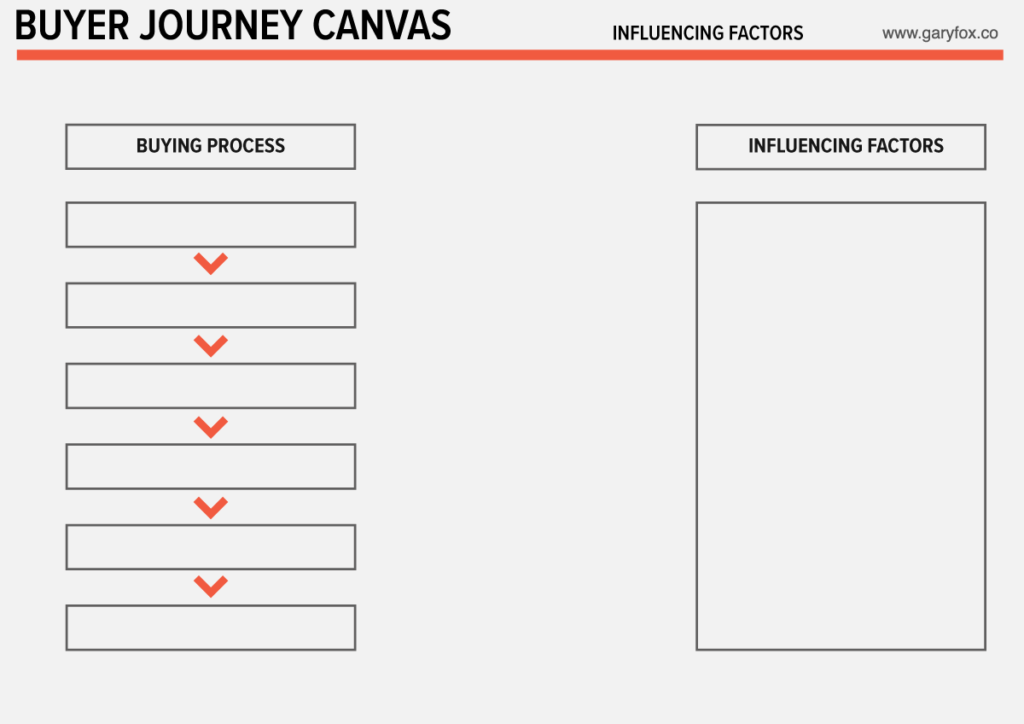
Note: the buying process can be specific or generic:
- Generic buying process labels: These are illustrated in the diagram below but are the 6 stages of the buying process: reach, learn, evaluate, select, develop and renew.
- Specific labels: An alternative approach is to use a specific point in the buying process and as a label in the left-hand process e.g. hire CRM consultant to advice on software, demonstration of CRM software live…
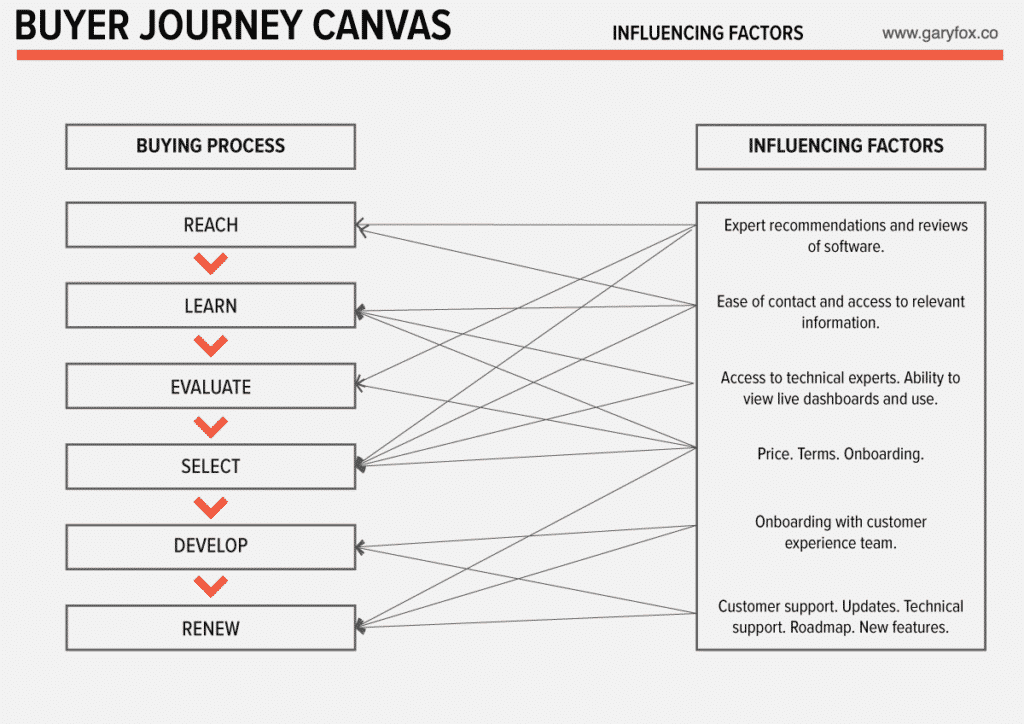
Step 4. Map Stakeholders to The Buyer Journey
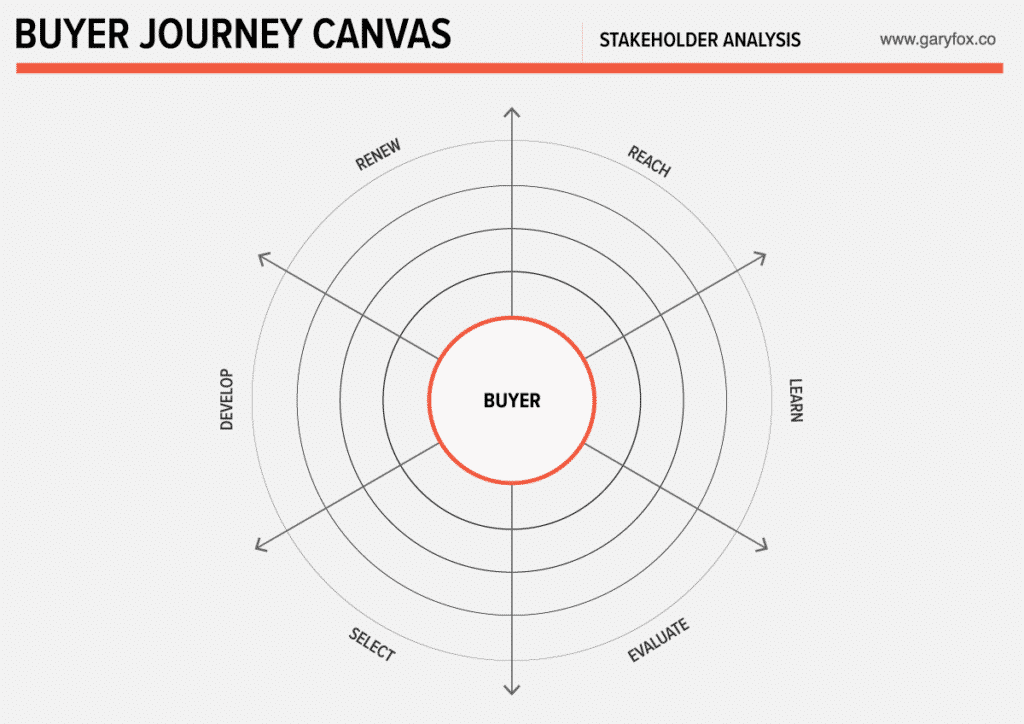
Mapping the stakeholders will help you with your marketing and with the overall sales process. It will also improve your lead generation by helping you to consider how to help the buyer bring onboard the other stakeholders at every stage.
Tip: You can use the size of a circle at each section to indicate how important or how much each stakeholder group affects the different stages.
You can download the free stakeholder analysis template at the bottom of the article.
Map The buyer journey (Steps 5 and 6)
Now it’s time to develop the strategy and tactics that will then power your lead generation process.
These final stages require input and discussion from a cross-section of people involved in marketing and sales. Alignment of communications, mapping the process and ensuring all relevant touchpoints are covered is critical to success.
Step 5. The Buyer Journey Funnel
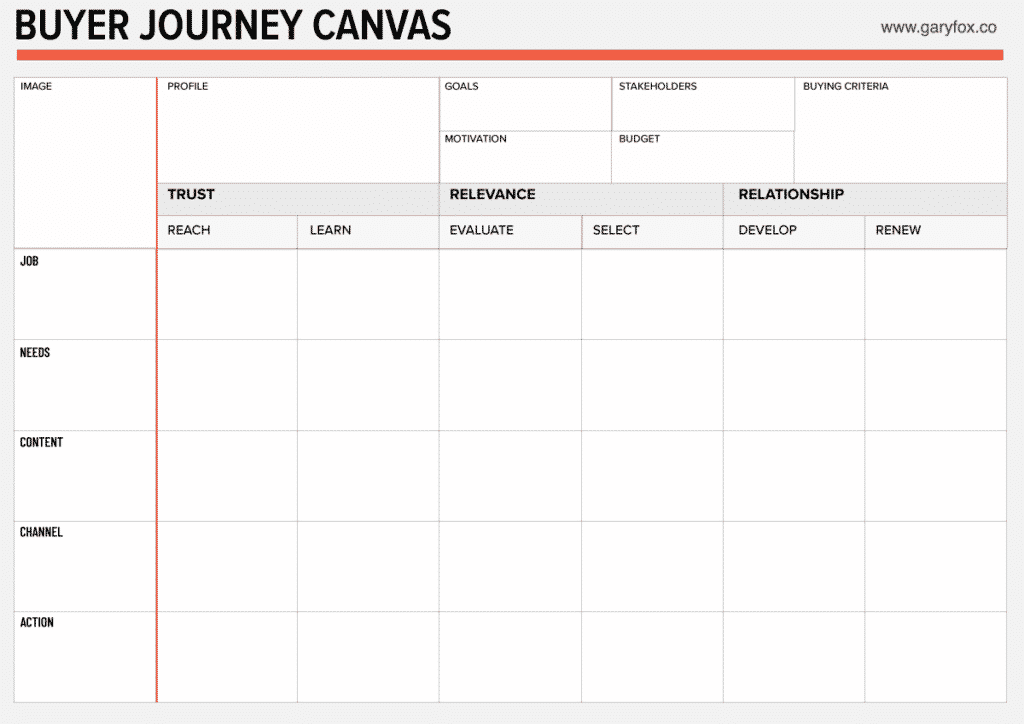
The buyer journey analysis is an important stage to get right. Each touchpoint needs to be carefully coordinated to deliver a seamless customer experience.
1. Job Section
A job is an essential task a buyer is trying to achieve at each stage of the buying journey.
Questions to ask:
- What are they trying to achieve?
- What are their priorities?
2. Needs
This is the problem space form the buyer persona. You need to understand the problem that the buyer is facing and their needs.
3. Content
Matching the content to the job and needs gives you an edge. This is where you use your value proposition to clearly signal to the buyer how you fit into their world and how you will help them.
Types of content you can use include: webinar, eBooks, brochures, reports, whitepapers,
Be clear about how each content matches the intent and the stage of the buyer journey. Do not add too many in or offer too many choices or you will end up losing the buyers attention.
4. Channel
Where will you use these insights? How will communicate the value proposition across the channels without it being confusing? Define your plan and map the touchpoints and to your communications strategy.
5. Action
You want to influence your buyer to take action. As they progress further through the process this will often involve an outbound call. But planning how and when you call is vital for conversion. Online you want to use a landing page builder to ensure that you have one clear call-to-action if they are downloading a high value and informative piece of content.
Modern outbound sales development requires much more than email and scripts. It is more akin to iterative AB testing process that you use for landing pages. It also requires people that can quickly adapt and learn from each encounter and then pass that information onto the rest of the team.
Enable teams to make decisions and remove bottlenecks.
You need teams that will push boundaries and to improve the sales process, that want to make a difference to the business and the customer – to help the customer achieve their goals.
To achieve this you need a dashboard and social tools that allow teams to quickly share learning, track improvements and identify patterns in each buyer segment.
You have to make everything repeatable to scale.
Another factor is to progressively build your knowledge of your prospect and gather more data about them and their business. How well you do this will depend on the tools you use.
What do you want the buyer to do? How are you going to move the buyer through different stages?
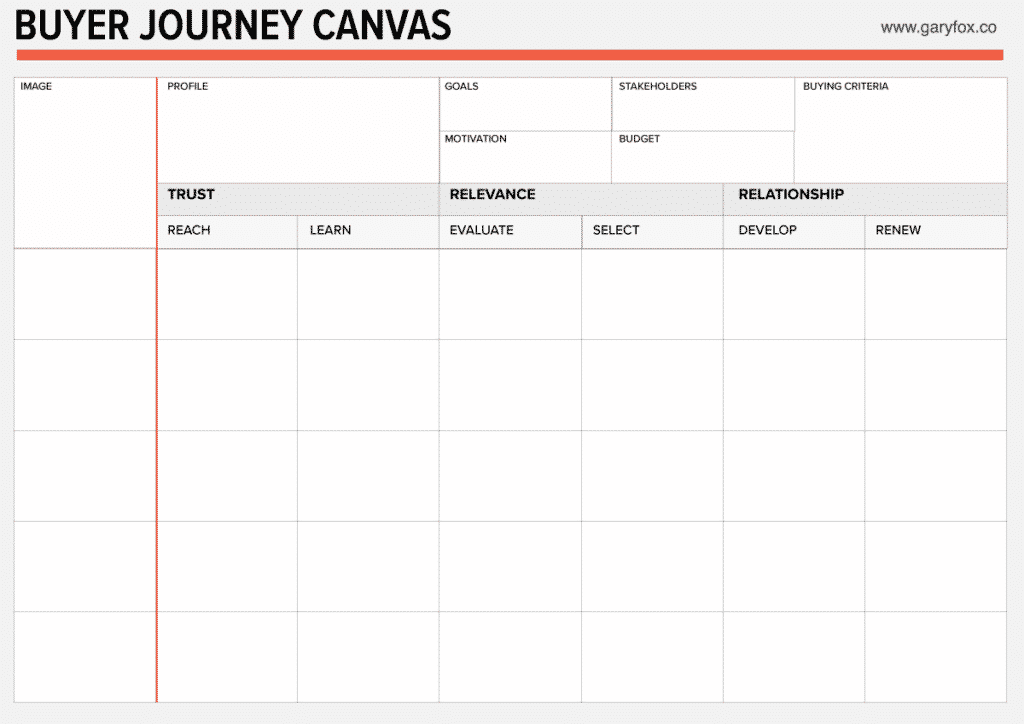
I’ve included a complete blank version of this template in case you want to adapt this canvas for your own use.
Download the free buyer persona templates below and the free B2B buying journey canvas.
Step 6. Iterate: Implement, Validate and Improve
Which departments should be involved in creating content?
Each business is different. However, the more cohesive and coordinated your sales and marketing processes and practice become, the more you benefit from a higher number of leads and higher conversion rates.
Sales and marketing is now firmly in the realm of experimentation and iteratively testing and improving the process.
Customers change, markets change and in response your organizations need to or face the consequences.